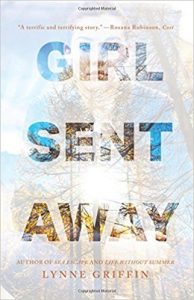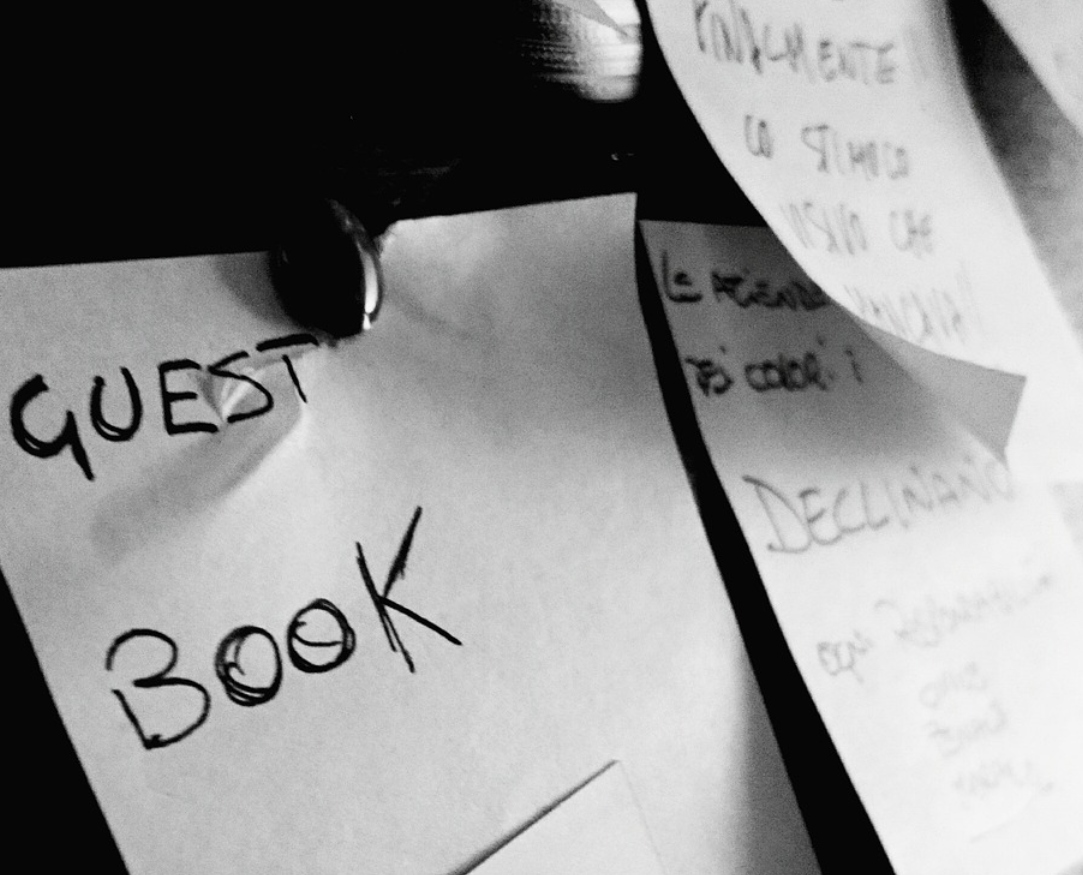Dying to Know, Afraid to Find Out: Building Tension in Fiction
By Guest | December 7, 2017 |
 Please welcome multipublished author Lynne Griffin to Writer Unboxed today!
Please welcome multipublished author Lynne Griffin to Writer Unboxed today!
Lynne is the author of the novels Girl Sent Away (SixOneSeven Books), Sea Escape (Simon & Schuster) and Life Without Summer (St. Martin’s Press), and the non-fiction guides, Let’s Talk About it: Adolescent Mental Health (SixOneSeven Books) and Negotiation Generation (Penguin). In addition to teaching at GrubStreet, Lynne teaches in the graduate program of family studies at Wheelock College. She is the family life contributor for Boston’s Fox Morning News and writes for Psychology Today. Her short fiction, essays, and articles have appeared in Slate, Brain, Child, Parenting, Scholastic Parent & Child, Psychology Today, The Writer, The Huffington Post, The Boston Globe, The Drum Literary Magazine, Parents, and more.
For more about Lynne’s work, visit her website.
Dying to Know, Afraid to Find Out: Building Tension in Fiction
No matter the narrative, we read to explore human behavior and the intricacies of social and emotional life. Good stories ask us to contemplate universal questions, like “Are we in control of our lives?” or “Will we be punished for our sins?” or “What do we need most in the world to feel whole, to be loved?”
I read Donna Tartt’s The Goldfinch to find out if Theo was ever held responsible for stealing the painting after surviving the terrorist attack in the museum. Yet mostly I read to learn how precious art might help or hinder the way a child grieves the loss of his mother.
I knew very little about displaced persons from Iran until I was introduced to the Behrani family in House of Sand and Fog by Andre Dubus III. I read this riveting novel of suspense because I needed to find out whether it would be Kathy or the Colonel who would win possession of the house in the California Hills. Except the more powerful reason I read was because the story asked me to imagine what it feels like to be someone forever at war with inequality and injustice. And to consider what I might be willing to do to hold onto the only place I had left to call my home.
The answers to existential questions in life don’t come easy. And they shouldn’t in fiction either. Compelling stories have the ability to draw us in. They challenge our present attitudes, often shifting our perspectives. To put it simply, there are no absolutes. As in The Goldfinch and in House of Sand and Fog, stealing is wrong until it isn’t.
Well-crafted stories don’t make difficult questions easier to answer, just easier to ponder. It’s the writer’s job to raise questions readers want to grapple with, and we do it by creating tension on every page, working through the messy lives of complex characters. Exploiting every element of craft, the writer engages in a delicate dance of creating compelling story questions that put readers on edge while not confusing or frustrating them.
How do writers achieve the right level of tension?
It’s this very discomfort over what’s about to happen and what characters stand to lose that keeps readers turning pages. Without some sense that characters might fail (or in the absence of believable conflicts and something valuable at stake) we have no reason to care how things turn out for them. And when we no longer care, we no longer read.
If like me you believe all scenes must contain some level of tension, the question becomes: How can writers vary the types of conflict and raise the stakes sufficiently in order to hold readers’ attention? Kurt Vonnegut Jr. famously offered writers this advice, “Make your characters want something right away even if it’s only a glass of water.”
Story conflict centers on character wants and needs, and the obstacles he or she encounters in fulfillment of these. Whether it involves something big, like a character looking for love, or something small, like the quest for a soda to quench thirst, creating tension means making it a little harder—or a lot harder—for your character to find an extraordinary lover or an ordinary can of Coke. Desires when thwarted force the reader to become invested in the story.
One way to figure out if you’ve found the right level of tension in a scene is by tapping into how the character feels as he or she collides with obstacles, and your own feelings of discomfort as you write or edit the scene.
Each action and its subsequent complications ideally bring characters one step higher on an emotional ladder, making potential failure increasingly dangerous. For every win a character accumulates, for every victory achieved, something else should worsen.
Think Big Picture
Author Terry McMillan said, “I like to think of what happens to characters in good novels and stories as knots—things keep knotting up. And by the end of the story—readers see an unknotting of sorts. Not what you expect, not the easy answers you get on TV, not wash and wear philosophies, but a reproduction of believable, emotional experiences.”
The next time you sit with your work-in-progress, pause to make a list of the knots in your story. Ask yourself if they’re interesting, fresh, authentic to the character. Have you tied plenty of simple knots like the clove hitch? And have you included at least a few constrictor knots—the kind of harsh knots that can be difficult if not impossible to untie once tightened.
Once you have knots, knots, and more knots, figure out what’s at stake for your characters if certain of them get untangled and others don’t. Remember to consider the knots readers will want to be untangled.
Focus on Little Particulars
Once you’ve chosen a central conflict that matters to characters and readers alike, and you’ve created a variety of knots to complicate the narrative, it’s time to channel Anton Chekhov who once urged writers, “to seize upon the little particulars, grouping them in such a way that, in reading, when you shut your eyes you get the picture.”
It’s at the micro level, with careful word choice and thoughtful sentence construction, that writers create interesting friction—and fiction. Let’s take a look at two novel excerpts.

This compelling novel takes us inside the lives of a girl and her father who fall prey to a horrific reality: a system of institutions that claims to treat trauma, but actually creates more of it. A must-read, especially for anyone whose life is touched by troubled teens. –Maia Szalavitz, author of Help at Any Cost: How the Troubled Teen Industry Cons Parents and Hurts Kids
“We ate dinner one night at a dark Hunan restaurant in old Chinatown. I watched her close her eyes, I could feel the waves of her passion like perfume across the tea cups.” —Janet Fitch, White Oleander
“How flat all sounds are at the seaside, flat and yet emphatic, like the sound of gunshots heard at a distance.” —John Banville, The Sea
Can you see the edginess and uncertainty in these examples? Are you asking yourself why one character sees “waves of passion across teacups” while another character conjures gunshots at the seaside? Every word in every sentence is an opportunity to raise reader questions and to play with tension, to create anticipation, expectation, and anxiety. It’s where the magic happens.
No worries, if you’ve not yet nailed the right level of tension in your manuscript or in certain of your scenes. Remember, writing is revision. Whether you layer it in later or amplify what’s already on the page, you should expect to revisit your work-in-progress many times over many months to get it right. This critical part of the revision process takes as long as it takes.
Tim O’Brien, author of The Things We Carried reminds us that, “The goal any fiction writer has, no matter what the subject, is to hit the human heart and the tear ducts and the nape of the neck and to make a person feel something about what the characters are going through and to experience the moral paradoxes and struggles of being human.”
Think about the last time you were cast under a story’s spell in the way O’Brien describes. What influence did big picture knots and micro-level tension have in keeping you turning pages? Share your favorite books and stories below so that we can enjoy that dying-to-know, afraid-to-find out feeling too.










“Every word in every sentences an opportunity to raise reader questions and to play with tension, and to create anticipation, expectation, and anxiety. It’s where the magic happens.”
I’m writing this out and putting it in front of my face. I want that magic!! Thank you, Lynne.
Hi Susan–so glad you found a tidbit of inspiration! When it comes to layering in tension, I think that’s where the fun is too.
I second your suggestion of Janet Fitch’s book, White Oleander. Within the first two paragraphs, she gives us “dagger green leaves” , “we couldn’t sleep”, “my mother was not herself in the time of the Santa Anas” and the line that sent shivers up my spine- “Lovers who kill each other now will blame it on the wind.” Talk about tension – watching Ingrid Magnussen, the mother, was like watching a rattlesnake. Fascinating but deadly. A great read, a fascinating character. I couldn’t get enough
Hi Maggie–White Oleander is one of my favs for exactly what you describe. Gorgeous tension on every page!
“Well-crafted stories don’t make difficult questions easier to answer, just easier to ponder.”
That sentence is pure gold. An ending doesn’t have to answer all the questions to be completely satisfactory.
This whole post is a keeper. Thanks.
Thanks Anna. The best stories linger in your mind and heart for days after you’ve turned the last page. Glad the post validated your thinking.
Thanks for this most useful post, Lynne. Ratcheting up the tension and tightening the screws is a skill I’m still learning to master. (Probably due to my naturally low tolerance for excitement. I get a thrill trying the newest flavor of breakfast cereal. Honey Nut Corn Chex — does life get any better?) When it’s time to chase my characters up a tree and throw rocks at them, I tend to let them hop into a shrub and throw water balloons . . .
Hi Christine. Keep in mind that even your desire for a big bowl of cereal can hit a snag. What if your houseguest finishes your last box? What if the company retires the flavor? Sometimes it’s the little knots that show us how a character handles stress and adversity. ;)
Another great suggestion, Lynne. A situation that most people might shrug off as unfortunate can be catastrophic to someone with deeper anxieties, anger, or insecurities. Now that you mention it, when I was a weight- and diet-obsessed teenager, running out of graham crackers could cause a major meltdown.
Great explanation, Lynne! The examples you provided really helped clarify your points.
I just finished Tartt’s first book, The Secret History. I knew that her prologue at the beginning had a fabulous hook, but was amazed when I went back afterwards to look again at the first two chapters how she foreshadowed everything that was to come and created such an aura of uneasiness.
Part of it was the narrator’s own nervousness, pretending to be someone he wasn’t.
Using the protagonist’s feelings works so well!
Even more surprisingly effective was the description of his first class with the teacher and small group of friends. The scenario they explored in class was not only unsettling but made me distrust these people the narrator was throwing his lot in with.
I thought The Goldfinch dragged in places; this book seemed tighter to me. Thanks for this post!
Great points Barbara. It’s a terrific idea to circle back to the beginning of a story once you finish reading to see how the tension was layered in. I loved A Secret History too. As for Goldfinch, I listened to on audio, read by actor David Pittu, and it was fabulous. I highly recommend listening sometime, to hear the rhythm she was going for.